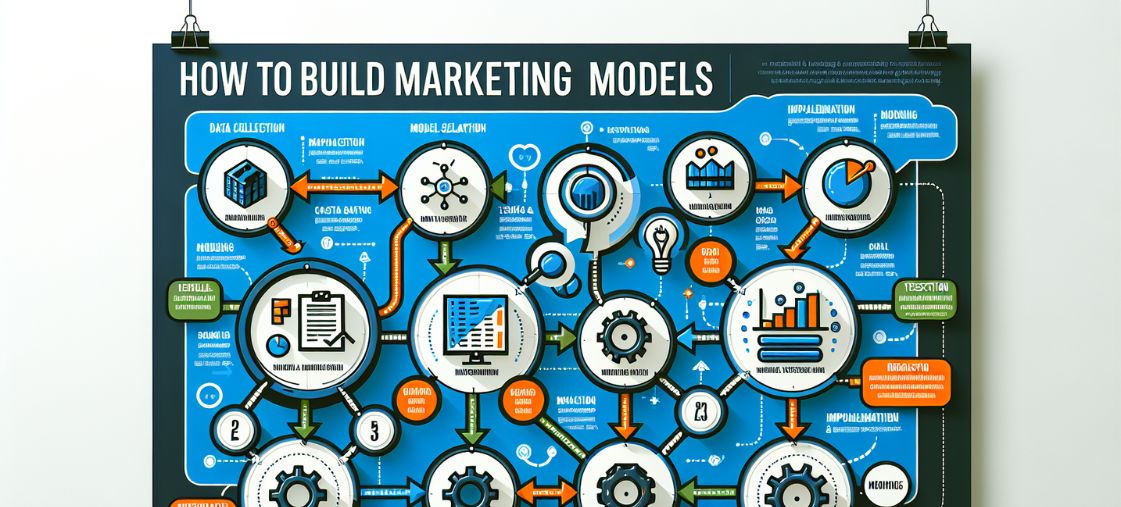
How to Build Marketing Models: Complete Guide for Business Success
Learning how to build marketing models is essential for businesses seeking sustainable growth and competitive advantage in today’s data-driven marketplace. Marketing models serve as strategic frameworks that help organizations understand customer behavior, optimize resource allocation, and predict campaign outcomes with greater accuracy.
Modern businesses rely heavily on sophisticated marketing frameworks to navigate complex consumer landscapes. Understanding the fundamentals of marketing model development enables companies to create targeted strategies that resonate with their audience while maximizing return on investment. These models provide invaluable insights into customer preferences, market trends, and competitive positioning.

Understanding Marketing Model Fundamentals
Marketing models are systematic representations of marketing processes that help businesses analyze, predict, and optimize their marketing efforts. These frameworks incorporate various data points, including customer demographics, purchasing behavior, market conditions, and competitive intelligence to create actionable insights.
The foundation of effective marketing models lies in comprehensive data collection and analysis. Organizations must gather information from multiple touchpoints, including website analytics, social media engagement, customer surveys, sales data, and market research. This holistic approach ensures that the resulting model accurately reflects real-world market dynamics.
Types of Marketing Models
Attribution Models
Attribution models help businesses understand which marketing channels and touchpoints contribute most effectively to conversions. These models assign credit to various marketing activities throughout the customer journey, enabling more informed budget allocation decisions.
Customer Lifetime Value Models
Customer Lifetime Value (CLV) models predict the total revenue a business can expect from a customer relationship. These models consider factors such as purchase frequency, average order value, customer retention rates, and acquisition costs to determine long-term profitability.
Market Mix Models
Market Mix Modeling (MMM) analyzes the impact of various marketing activities on sales performance. These models help businesses understand how different marketing channels interact and influence overall campaign effectiveness.
Step-by-Step Guide to Building Marketing Models
Step 1: Define Clear Objectives
Begin by establishing specific, measurable goals for your marketing model. Whether you’re aiming to improve customer acquisition, increase retention rates, or optimize advertising spend, clear objectives guide the entire model development process. Consider what business questions you need answered and how the model will support decision-making processes.
Step 2: Collect and Prepare Data
Gather relevant data from all available sources, including CRM systems, web analytics platforms, advertising networks, and customer feedback channels. Data quality is crucial for model accuracy, so invest time in cleaning, validating, and organizing your datasets. Ensure data consistency across different sources and time periods.
Advanced marketing intelligence platforms can significantly streamline this process by automatically collecting and processing data from multiple sources. These tools help maintain data integrity while providing real-time insights for model refinement.
Step 3: Choose Appropriate Modeling Techniques
Select modeling approaches that align with your objectives and data characteristics. Common techniques include regression analysis, machine learning algorithms, time series analysis, and statistical modeling. Consider factors such as data volume, complexity, and required accuracy when making your selection.
Step 4: Build and Test Your Model
Develop your model using historical data, then validate its accuracy using separate test datasets. This process helps identify potential issues and ensures the model performs reliably in real-world scenarios. Iterate on your model design based on testing results and performance metrics.
Step 5: Implement and Monitor
Deploy your marketing model in a controlled environment, monitoring its performance closely. Track key metrics and compare predicted outcomes with actual results. Regular monitoring helps identify when model updates or recalibration may be necessary.
Best Practices for Marketing Model Development
Data Quality Management
Maintain high data quality standards throughout the modeling process. Implement data validation procedures, establish consistent naming conventions, and regularly audit data sources for accuracy and completeness.
Cross-Functional Collaboration
Involve stakeholders from marketing, sales, analytics, and IT departments in model development. This collaborative approach ensures that models address real business needs while remaining technically feasible and actionable.
Continuous Improvement
Marketing models require ongoing refinement to maintain accuracy and relevance. Market conditions, consumer behavior, and business objectives evolve over time, necessitating regular model updates and optimization.
Common Challenges and Solutions
Data Integration Issues
Many organizations struggle with integrating data from disparate sources. Implement robust data management systems and establish clear data governance policies to address these challenges effectively.
Model Complexity
Overly complex models can be difficult to interpret and maintain. Strike a balance between model sophistication and practical usability, ensuring that stakeholders can understand and act upon model insights.
Resource Constraints
Building effective marketing models requires significant time, expertise, and technological resources. Consider partnering with specialized analytics firms or investing in training for internal teams to overcome these limitations.
Advanced Marketing Model Applications
Modern marketing models incorporate artificial intelligence and machine learning capabilities to provide more sophisticated insights. These advanced applications can identify complex patterns in customer behavior, predict market trends, and optimize campaign performance in real-time.
Predictive analytics enables businesses to anticipate customer needs and market changes, allowing for proactive strategy adjustments. These capabilities are particularly valuable in competitive industries where rapid response to market dynamics can provide significant advantages.
Measuring Marketing Model Success
Establish clear metrics for evaluating model performance, including accuracy rates, prediction confidence intervals, and business impact measurements. Regular performance assessments help identify areas for improvement and demonstrate the value of marketing model investments.
Consider both quantitative metrics (such as conversion rates and revenue attribution) and qualitative factors (such as decision-making speed and strategic insights) when evaluating model success.
Conclusion
Building effective marketing models requires careful planning, quality data, appropriate analytical techniques, and ongoing optimization. Organizations that invest in developing robust marketing models gain significant competitive advantages through improved decision-making, optimized resource allocation, and enhanced customer understanding.
Success in marketing model development depends on combining technical expertise with deep business knowledge. By following established best practices and maintaining a commitment to continuous improvement, businesses can create powerful analytical frameworks that drive sustainable growth and market success. Tools like advanced analytics platforms can further enhance model capabilities and provide deeper insights into marketing performance.
The investment in marketing model development pays dividends through more effective campaigns, better customer targeting, and improved return on marketing investments. As markets become increasingly complex and competitive, organizations with sophisticated marketing models will be better positioned to thrive and grow.


